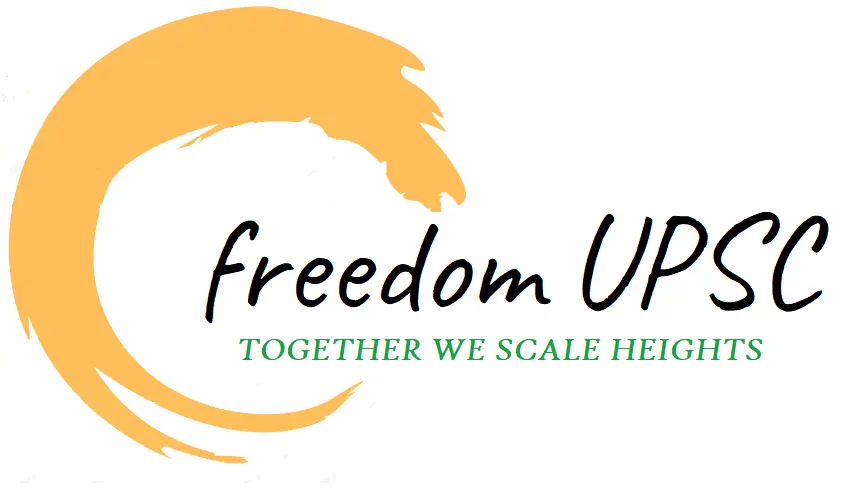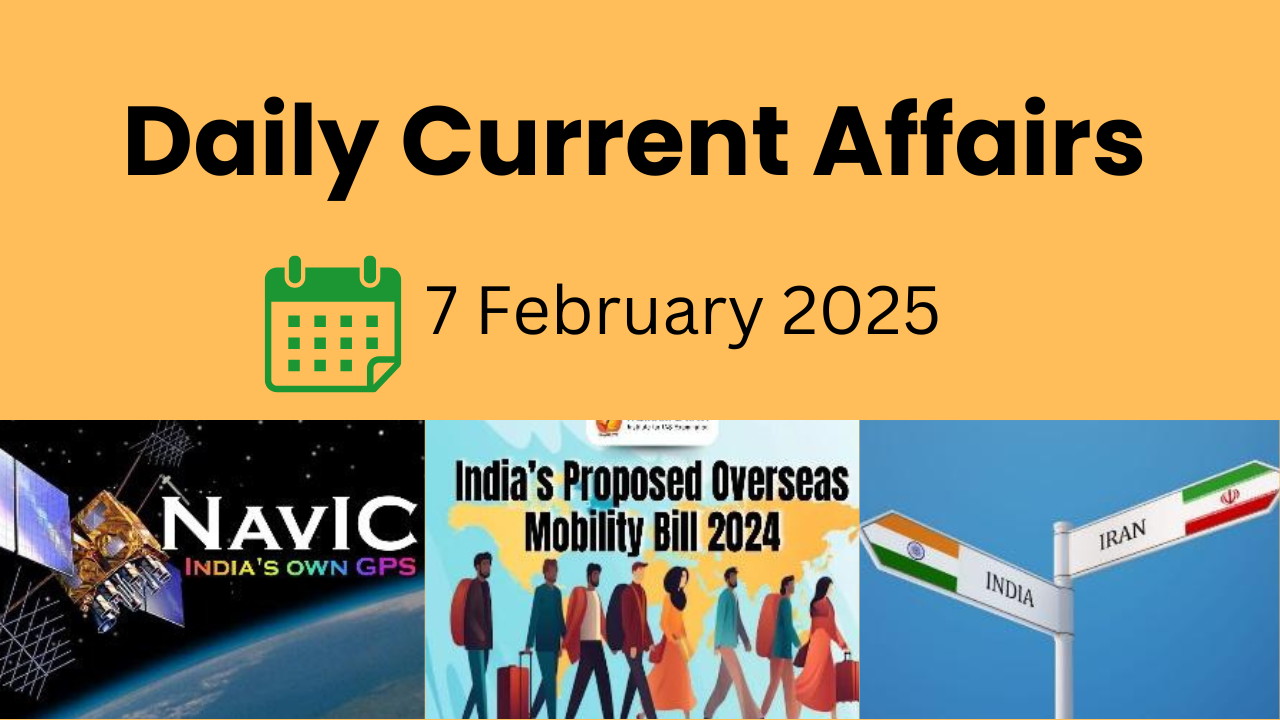1. Bhopal Bans Begging: A Step Towards Regulation or a Challenge to Rights?
Context: The Bhopal district administration has imposed a ban on begging, along with restrictions on giving alms or buying goods from beggars. This action has been enforced under Section 163 of the Bharatiya Nagarik Suraksha Sanhita (BNSS), 2023, which empowers the District Magistrate (DM) or an Executive Magistrate to intervene in cases of public nuisance. Additionally, Section 223 of BNSS prescribes punishment for non-compliance with such orders.
Begging in India: A Persistent Concern
- As per Census 2011, India has over 4.13 lakh beggars and vagrants.
- Several cities have implemented similar bans before major events.
- 2017: Hyderabad banned begging before the Global Entrepreneurship Summit.
- 2010: Delhi removed beggars ahead of the Commonwealth Games.
- Such measures often attract criticism for targeting vulnerable communities instead of addressing poverty and homelessness.
Why Criminalize Begging?
- Public Nuisance & Beautification: Beggars are seen as a hindrance to tourism and investment, especially before major international events.
- Traffic & Safety Concerns: Begging at busy intersections causes accidents and disrupts traffic flow.
- Exploitation by Organized Syndicates: Many beggars are part of criminal networks, where children and disabled persons are forced into begging.
- Public Health & Hygiene: The presence of beggars in crowded urban areas raises concerns about sanitation and disease transmission.
Legal Framework on Begging in India:
Although there is no national law banning begging, several states have their own anti-begging laws, many of which date back to colonial times:
- European Vagrancy Act, 1869: A British-era law meant to prevent poor Europeans in India from resorting to begging.
- Bombay Prevention of Begging Act, 1959: Considered a model law, adopted by multiple states like Gujarat, Karnataka, Uttar Pradesh, and Andhra Pradesh.
- Bengal Vagrancy Act, 1943 & Madras Prevention of Begging Act, 1945: Pre-independence laws criminalizing begging and promoting rehabilitation through workhouses.
- Vagrancy Laws under Concurrent List (Entry 15): Allows both Union and state governments to regulate vagrancy and destitution.
- Article 23 of the Indian Constitution: Prohibits human trafficking, forced labor (begar), and other exploitative practices.
Why Does Begging Persist in India?
- Poverty & Unemployment: Widespread economic disparities leave people with no means of survival.
- Lack of Social Security: Inadequate access to food, healthcare, and shelter forces people onto the streets.
- Forced Begging & Human Trafficking: Many children and disabled persons are forced into begging by organized crime syndicates.
- Migration & Urbanization: Rural migrants seeking jobs often fail to find work and end up as beggars.
- Disability & Mental Health Issues: The absence of proper healthcare leaves disabled and mentally ill individuals without support.
Impact of Criminalizing Begging:
- Violation of Human Rights: Criminalizing begging targets the poorest sections of society, violating their right to dignity and equality.
- Arbitrary Detention: Many anti-begging laws allow authorities to detain beggars without due legal process.
- Failure to Address Root Causes: Simply banning begging does not eliminate poverty or homelessness.
Judicial Interventions:
- Delhi High Court (2018): Struck down parts of the Bombay Prevention of Begging Act, calling them unconstitutional.
- Jammu & Kashmir High Court (2019): Declared the Prevention of Beggary Act unconstitutional.
- Supreme Court (2021): Recognized begging as a socio-economic issue, refusing to impose a blanket ban during COVID-19.
Government Initiatives for Rehabilitation:
- SMILE Scheme (2021)
- Support for Marginalized Individuals for Livelihood and Enterprise
- A Central Sector Scheme focused on rehabilitating beggars and providing them with livelihood opportunities.
- Persons in Destitution (Protection, Care and Rehabilitation) Model Bill, 2016 Proposed by the Ministry of Social Justice and Empowerment but later dropped.
- Shelters & Skill Development Programs: Several states provide temporary shelters, food centers, and vocational training to help beggars reintegrate into society.
Way Forward: Solutions Beyond Criminalization
- Legal Reforms India needs a comprehensive national law that focuses on rehabilitation instead of punishment.
- Strengthening Social Welfare Schemes: Expanding social security programs, healthcare, and employment can address the root causes of begging.
- Regulation of Street Vending: Many beggars resort to selling goods. Legalizing and supporting street vending can offer sustainable livelihoods.
- Partnership with NGOs & Private Sector: Collaborations with NGOs and private organizations can create structured rehabilitation programs.
Final Thoughts:
While banning begging may address immediate urban concerns, it does not solve the deeper socio-economic issues that drive people to beg. A holistic approach combining rehabilitation, employment, and social welfare is needed to truly uplift the most vulnerable sections of society.
2. Rajasthan Introduces Bill to Curb ‘Unlawful’ Religious Conversions
Context: The Rajasthan government has introduced a new Bill aimed at preventing religious conversions carried out through force, fraud, coercion, or inducement.
Background:
- Rajasthan’s first attempt to pass an anti-conversion law was in 2006, but it faced strong opposition and was later returned by the President.
- In 2017, the Rajasthan High Court issued guidelines to regulate forced conversions in the absence of a dedicated law.
- The current Bill is modeled on similar anti-conversion laws already enforced in Madhya Pradesh and Uttarakhand.
Key Provisions of the Bill:
1. Definition of Unlawful Conversion:
The Bill defines unlawful religious conversion as conversion carried out through:
- Coercion
- Force
- Allurement (monetary benefits, gifts, or other incentives)
- Fraud or misrepresentation
2. Burden of Proof:
- The responsibility to prove that a conversion was not unlawful lies with the accused.
3. Right to File Complaints:
- Blood relatives such as parents or siblings of the affected person can file an FIR in case of suspected unlawful conversion.
4. Punishments for Unlawful Conversions:
| Offence | Punishment | Fine |
| General unlawful conversion | 1 to 5 years in jail | 15,000 |
| Conversion of minor, woman, or SC/ST person | 2 to 10 years in jail | 25,000 |
| Mass conversions | 3 to 10 years in jail | 50,000 |
| Repeat offenders | Double the punishment | – |
- All offences are cognizable and non-bailable, meaning immediate arrest without a warrant.
5. Voluntary Conversion Procedure:
- Anyone willing to convert must submit a declaration to the District Magistrate (DM) 60 days in advance.
- The conversion ceremony organizer must notify the DM at least 30 days prior.
- Authorities will conduct an investigation to verify the intent and legitimacy of the conversion.
- After conversion, the individual must appear before the DM within 21 days to confirm the change of faith.
Why is the Bill Necessary?
The government argues that:
- Many vulnerable individuals are being manipulated into conversion.
- The law is not against religious freedom but seeks to prevent fraudulent conversions.
- It ensures that religious conversions occur voluntarily and without external pressure.
The Constitutional Debate:
- During the Constituent Assembly debates, some members feared that allowing the “propagation of religion” could lead to forced conversions.
- They suggested replacing the word “propagate” with “practise privately” to avoid misuse.
- However, Article 25(1) of the Indian Constitution was adopted, granting all individuals:
- Freedom of conscience
- Right to profess, practise, and propagate religion
- These rights, however, come with reasonable restrictions in the interest of public order, morality, and health.
Final Thoughts:
The Rajasthan government believes that this law will protect individuals from coercion, while critics argue it may curb religious freedom. The balance between personal choice and legal oversight will be crucial in determining the impact of this legislation.
3. US Reassesses Sanctions Waiver for India’s Chabahar Port Project
Context: The United States is currently reviewing the sanctions waiver granted to India for its involvement in the Chabahar Port project in Iran. This move could have major implications for India’s connectivity plans with Central Asia.
Background:
- The US has imposed multiple sanctions on Iran, primarily targeting its nuclear program and economic activities.
- India was granted a waiver for its role in developing Chabahar Port, recognizing its humanitarian and strategic importance.
US Sanctions Waivers for Chabahar:
- First Waiver (2018): The US exempted India from sanctions related to Chabahar, acknowledging its role in regional connectivity and humanitarian efforts.
- Renewed Waivers: The waiver was extended in subsequent years, allowing India to continue operations at the Shahid Beheshti Terminal and pursue connectivity projects.
Impact of US Sanctions on India:
1. Disruption in Chabahar’s Development:
- The new US review could restrict India’s ability to continue its operations at the port.
- India has already faced global pressure for continuing to import oil from Russia, despite US and Western sanctions.
2. Trade and Connectivity Concerns:
- Since 2018, the Chabahar Port has handled over 90,000 TEUs (twenty-foot equivalent units) of container traffic and more than 8.4 million metric tons of cargo.
- Any new restrictions could slow down progress and reduce trade efficiency.
3. Declining Trade with Iran:
- US sanctions have led to a significant decline in India-Iran trade.
- In 2018-19, India imported crude oil from Iran worth $13 billion.
- Post 2019, imports dropped drastically to less than $1 billion annually.
Chabahar Port: A Strategic Gateway:
- Located on the Gulf of Oman, Chabahar Port is Iran’s only oceanic port, situated in Sistan and Baluchestan Province.
- The port has two key terminals:
- Shahid Kalantari Port – An older facility with limited capacity for feeder vessels.
- Shahid Beheshti Port – Currently undergoing four-phase development, aiming to reach 82 million tons annual capacity upon completion.
Why Chabahar Port is Crucial for India?
1. Strategic Importance:
- Bypasses Pakistan, providing India with a direct trade route to Afghanistan and Central Asia.
- Strengthens India’s regional presence and offers an alternative to China’s Belt and Road Initiative (BRI).
2. Economic Benefits:
- Facilitates trade through the International North-South Transport Corridor (INSTC), cutting transport costs and reducing transit time.
- The Economic Survey 2024-25 reported a 43% rise in vessel traffic and a 34% increase in container traffic at the Shahid Beheshti Terminal.
3. India’s Investment in Chabahar:
- Under the 2024 agreement, India Ports Global Ltd (IPGL) has committed $120 million to equip the port.
- India has also extended a $250 million credit facility for infrastructure development linked to Chabahar.
What Lies Ahead?
- India has successfully balanced its strategic relations with both the US and Iran.
- The potential revocation of the Chabahar waiver poses a diplomatic challenge for India.
- Given its regional importance, India must continue to invest in Chabahar while engaging in careful diplomatic negotiations with both Washington and Tehran.
The future of Chabahar remains crucial for India’s foreign policy, trade ambitions, and regional connectivity with Central Asia and Afghanistan.
4. India Shifts Fiscal Anchor from Fiscal Deficit to Debt-GDP Ratio
Context: The Indian government has announced a strategic shift in its fiscal policy, moving from the fiscal deficit as the primary fiscal anchor to the debt-GDP ratio. This transition will take effect from the 2026-27 financial year, aiming for greater fiscal sustainability and long-term economic stability.
Understanding the Shift:
The government has outlined three scenarios for fiscal consolidation, depending on the nominal GDP growth rate:
- Mild Scenario – 10% GDP growth
- Moderate Scenario – 10.5% GDP growth
- High Growth Scenario – 11% GDP growth
Debt-GDP Ratio in India:
- The central government’s debt-GDP ratio is projected to be 57.1% in 2024-25 and 56.1% in 2025-26.
- The government aims to reduce this ratio to 50% ± 1% by 2031.
Why the Shift?
1. Improved Transparency and Flexibility:
- The debt-GDP ratio offers a more holistic and long-term view of the country’s fiscal health, unlike the rigid annual fiscal deficit targets.
2. Global Best Practices:
- Many advanced economies prioritize debt sustainability over deficit reduction, ensuring that fiscal policies remain adaptable to economic changes.
3. Stronger Fiscal Management:
- A debt-based framework enables the government to allocate resources more effectively, rebuild financial buffers, and invest in growth-enhancing expenditures.
4. Greater Clarity in Borrowings:
- The new approach will ensure transparent disclosure of off-budget borrowings, addressing past concerns about fiscal opacity.
Challenges in Implementation:
1. Delayed FRBM Act Targets:
- The shift means a significant delay in achieving the Fiscal Responsibility and Budget Management (FRBM) Act’s target of a 40% debt-GDP ratio.
2. Balancing Fiscal Discipline with Growth:
- Maintaining strict fiscal discipline while ensuring adequate public spending for economic growth will be a major challenge.
3. Rising State-Level Debt:
- The combined debt burden of both the central and state governments remains high, necessitating coordinated fiscal planning.
Key Recommendations by the NK Singh Committee:
The NK Singh Committee had previously emphasized the importance of debt sustainability in fiscal policy. Its key recommendations include:
- Debt-to-GDP Ratio Target:
- A 60% overall target
- 40% for the Centre
- 20% for States by FY23
- Fiscal Deficit Target:
- Reduce fiscal deficit to GDP ratio to 2.5% by FY23
- Formation of a Fiscal Council:
- An independent body with a Chairperson and two members, appointed by the Centre.
- Responsibilities include:
- Preparing multi-year fiscal forecasts
- Recommending changes to fiscal strategies
- Enhancing the quality of fiscal data
- Advising the government on deviations from fiscal targets
- Clear Guidelines for Deviation:
- The grounds for deviating from fiscal targets must be clearly defined, preventing arbitrary adjustments.
- State-Specific Debt Trajectories:
- The Finance Commission should recommend individual debt trajectories for each state.
Conclusion:
The transition to a debt-GDP ratio as the fiscal anchor marks a major reform in India’s fiscal policy framework. While this shift offers greater flexibility and long-term sustainability, its success depends on effective implementation, maintaining fiscal discipline, and ensuring balanced economic growth.
5. India’s Overseas Mobility Bill 2024: Ensuring Safe and Legal Migration
Context: The Indian government is actively working on a new legislative framework to streamline and safeguard overseas employment for its citizens. The Overseas Mobility (Facilitation and Welfare) Bill, 2024 aims to replace the outdated Emigration Act of 1983, ensuring safe, legal, and structured migration.
This move comes at a critical juncture as the US administration under President Donald Trump 2.0 has begun deporting illegal Indian immigrants. The bill is designed to protect Indian workers abroad while enhancing legal migration pathways.
Why is the Overseas Mobility Bill 2024 Needed?
Challenges with the Existing Emigration Act (1983)
- The current Emigration Act is outdated and does not reflect the realities of modern migration trends.
- It lacks provisions for structured overseas employment and migrant welfare.
- Irregular migration routes expose Indian workers to exploitation and fraud.
Urgency for a New Migration Framework:
- The Parliamentary Standing Committee on External Affairs, led by Shashi Tharoor, has emphasized the need for comprehensive migration reform.
- The Ministry of External Affairs (MEA) is working on a legislative overhaul to ensure safe and orderly migration.
- The bill will help curb fraudulent recruitment agencies and promote transparency in overseas employment opportunities.
Key Highlights of the Overseas Mobility Bill 2024:
1. Establishing a Safe and Orderly Migration System:
- The bill introduces a structured framework to facilitate legal migration.
- It ensures transparency, safety, and protection against exploitation.
2. Public Consultation & Stakeholder Engagement:
- The Ministry of External Affairs is collaborating with multiple government ministries before finalizing the draft.
- The public will have 15-30 days to submit feedback on the bill.
- It will undergo inter-ministerial consultations before being presented to the Cabinet.
3. Strengthening the Role of the Protector of Emigrants (PoE):
- The PoE offices will work closely with Indian embassies and consulates to safeguard migrant welfare.
- The bill ensures that PoE offices address grievances, employment disputes, and assist in worker protection.
4. Raising Awareness & Preventing Exploitation:
- Indian embassies abroad will launch awareness campaigns to educate prospective migrants.
- Official advisories will guide emigrants on safe migration practices and warn against fraudulent recruitment agencies.
5. Grievance Redressal & Repatriation Support:
- The bill aims to strengthen support systems for Indian workers facing mistreatment abroad.
- Legal aid and repatriation assistance will be provided to migrants in distress.
Significance of the Bill Amid US Deportations:
- The US government has intensified deportations of illegal Indian immigrants, increasing the need for strict migration laws.
- Key statistics on Indian migrants in the US:
- 20,000 undocumented Indians are currently facing deportation under Trump 2.0.
- The total undocumented Indian population in the US stands at approximately 725,000, making it the largest non-Latin American undocumented group.
- The first batch of deportees has already been sent back to India.
Impact of the Bill on Indian Migrants & Economy:
For Indian Workers Abroad:
✔ Protection from fraudulent recruitment agencies.
✔ Stronger support system through embassies and government agencies.
✔ Legal migration pathways ensuring job security and fair wages.
For the Indian Economy:
✔ Legal migration will increase remittances, a major contributor to India’s GDP.
✔ Strengthening India’s labor force presence in Gulf nations, the US, and Europe.
✔ Reducing illegal migration will improve diplomatic ties with host countries.
Timeline & Next Steps:
- The MEA has assured that the bill’s draft will be finalized within a year.
- The Parliamentary Committee has demanded an update within three months on the progress.
- Once enacted, the bill will replace the Emigration Act of 1983, modernizing India’s migration policies.
Conclusion:
The Overseas Mobility (Facilitation and Welfare) Bill, 2024 is a landmark reform aimed at ensuring safe, legal, and structured migration for Indian workers. With tightening immigration policies in countries like the US, India must create robust migration frameworks to protect its workers and boost overseas employment opportunities.
With public consultations and ministerial reviews underway, the bill is expected to be enacted within a year, ensuring safer migration and stronger global opportunities for Indian workers.
6. NavIC: India’s Indigenous Satellite Navigation System
Context: India’s Navigation with Indian Constellation (NavIC), developed by ISRO, is a homegrown satellite navigation system designed for both civilian and defense applications. However, the program has faced multiple setbacks, including satellite failures and technical issues.
The latest blow came on February 2, 2025, when the NVS-02 satellite failed to reach its intended orbit due to an engine malfunction. This marks another challenge for the Indian Regional Navigation Satellite System (IRNSS), which has been struggling with satellite failures and replacements since its inception.
Background and Challenges Faced by NavIC:
1. The Vision Behind NavIC:
- NavIC was conceptualized after the 1999 Kargil War, highlighting India’s need for an independent navigation system.
- The goal was to establish a seven-satellite constellation by 2016 to provide accurate positioning data across India and surrounding regions.
- Despite ISRO’s declaration of completion in 2016, recurring failures and replacements have hindered progress.
2. Failures in IRNSS Satellites:
a) Atomic Clock Malfunctions (2016 Onward):
- Rubidium atomic clocks, crucial for precise timing, malfunctioned in multiple satellites.
- Each IRNSS satellite is equipped with three atomic clocks.
- In July 2016, ISRO confirmed that all clocks in IRNSS-1A had stopped working.
- Similar clock failures were later reported in IRNSS-1C, 1D, 1E, and 1G.
b) Satellite Launch & Deployment Failures:
- IRNSS-1H (2017), meant to replace IRNSS-1A, failed as its heat shield did not detach.
- IRNSS-1K (NVS-02, 2025) suffered an engine failure, leaving it in a sub-optimal orbit.
- Out of 11 IRNSS satellites launched, six have encountered failures, affecting the system’s efficiency.
Current Operational Status of NavIC:
- According to ISRO’s 2023-24 report, only five satellites remain fully operational:
- IRNSS-1B, 1C, 1F, 1I, and NVS-01.
- However, some reports suggest IRNSS-1C is only partially operational due to clock malfunctions.
Satellite Generations and Technological Upgrades:
- First-generation satellites (IRNSS-1H, 1I) carried modified European atomic clocks.
- Second-generation satellites (NVS-01, NVS-02) use a combination of indigenous and foreign clocks.
- Despite these upgrades, NVS-02 failed due to an engine malfunction, raising concerns over the system’s reliability.
Why is NavIC Crucial for India?
1. Key Services Provided by NavIC:
- Standard Positioning Service (SPS): Available for general and commercial users.
- Restricted Service (RS): Exclusive for defense and strategic applications.
- Offers better than 20-meter accuracy across India and 1,500 km beyond its borders.
- Provides dual-frequency navigation in L5 and S bands, making it more resilient than other systems.
2. Strategic Importance for Defense:
- Ensures secure and independent navigation, unlike GPS, which is controlled by the US military.
- Other global navigation systems like GLONASS (Russia), Galileo (EU), BeiDou (China), and QZSS (Japan) are primarily military-driven.
- NavIC allows India’s armed forces to operate without reliance on foreign satellite networks.
3. Commercial and Consumer Adoption:
- ISRO is working with mobile and automotive companies to integrate NavIC into commercial products.
- Qualcomm, a leading chip manufacturer, announced NavIC support in its chipsets in December 2023.
- Adoption of NavIC in smartphones, vehicle tracking, and logistics will enhance India’s navigation ecosystem.
Future Plans for NavIC Expansion:
- ISRO plans to launch three more second-generation satellites:
- NVS-03, NVS-04, and NVS-05 to strengthen the NavIC constellation.
- These new satellites will:
- Improve positioning accuracy and enhance reliability.
- Ensure continuity of services despite failures like NVS-02.
- Reduce dependence on foreign navigation systems.
Conclusion:
Despite setbacks, NavIC remains a crucial initiative for India’s technological and strategic independence. The failures highlight technical challenges, but with upcoming next-generation satellites, ISRO aims to overcome these hurdles and fully operationalize NavIC.
With enhanced commercial adoption and continuous upgrades, NavIC has the potential to become a global alternative to existing navigation systems, ensuring India’s leadership in space-based positioning services.




